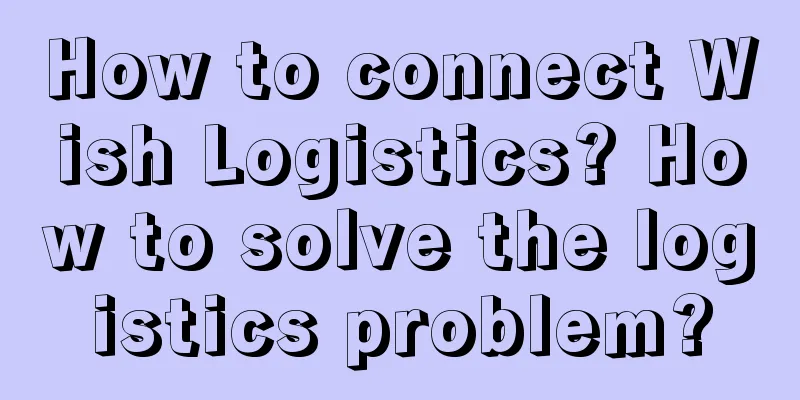What does Amazon's reserved inventory quantity mean? What happens if Amazon keeps reserving but does not put the product on the shelves?

|
As one of the world's largest e-commerce platforms, Amazon's inventory management and operation strategies are crucial for sellers. Among them, the inventory reserve quantity is an important concept, which involves the seller's sales strategy and inventory planning. So what does Amazon's inventory reserve quantity mean? Let's explain it to you below. 1. What does Amazon inventory reserve quantity mean? Amazon inventory reserve quantity refers to the inventory quantity limit set by sellers on the Amazon platform for certain specific products. This limit is to ensure that this part of the inventory will not be purchased by other buyers within a certain period of time, so as to ensure that sellers can sell according to their own sales strategies. Specifically, when a seller expects a product to have a sales peak in a certain period of time in the future, or wants to reserve inventory for certain specific customers, he or she can set the inventory reserve quantity. In this way, even if other buyers want to buy the product, they will not be able to buy it due to the inventory reservation, thus ensuring that the seller can sell according to his or her plan. The setting of inventory reserve quantity not only helps sellers better control the sales rhythm, but also avoids the risk of inventory backlog and unsalable products to a certain extent. It also provides sellers with a flexible sales strategy, which allows them to adjust the inventory reserve quantity at any time according to market demand and competition situation. 2. What happens if Amazon keeps reserving but not putting it on the shelves? 1. Long-term non-sale will lead to reduced account activity. Amazon platform will evaluate the seller's performance based on the seller's sales and account activity. If the seller has no sales records for a long time, the platform may consider the account inactive, and then reduce its weight or take other restrictive measures. 2. Long periods of time without selling products may also affect the store's reputation and rating. Buyers usually pay attention to the store's reputation and rating when purchasing goods. If the store has no sales records for a long time or has few reviews, it may make buyers feel distrustful, thus affecting their purchasing decisions. 3. Reserving inventory for a long time without selling it may also lead to inventory backlog and capital occupation. Inventory staying in the warehouse for a long time not only increases storage costs, but may also cause commodity depreciation or unsalability due to market changes. Funds are occupied in inventory, which also limits the seller's investment and operation in other aspects. Amazon's long-term reservation without selling may have an adverse impact on account activity, store reputation and capital flow. Therefore, when setting the inventory reserve quantity, sellers should fully consider market demand, competition situation and their own operating strategy to ensure that the inventory can be used reasonably and effectively. |
<<: Which site is better to open as the second shopee site?
>>: Update on the selection criteria for Shopee Singapore Site Preferred Sellers and Mall Sellers
Recommend
Former Alibaba P8 reveals the past of Taobao Private Domain
From "omni-channel platform" to "sm...
What are the e-commerce platforms in Southeast Asia? Which ones are easy to operate?
In recent years, the cross-border e-commerce indus...
Xiaohongshu has many popular articles but they don’t bring conversions. How to break the deadlock?
Hot topics on Xiaohongshu are often practical, nov...
The public account has been restricted. What should I do if there is no recommended traffic?
In the operation of WeChat official accounts, the ...
Does Amazon require a security deposit? How much capital is needed to do business on Amazon?
As the Amazon platform continues to grow, more and...
After Douyin suffered a setback, did Kuaishou win the food delivery business?
How are short video platforms Douyin and Kuaishou ...
What is Shopee Live? What is it used for?
Nowadays, whether it is the media or e-commerce, e...
Pay for knowledge, and end the relationship as soon as the deal is completed!
Do you know about knowledge payment? Do you know h...
Why did Amazon suddenly stop processing orders for a few days? What are the reasons?
Amazon is a popular cross-border e-commerce platfo...
Chinese AI conquers foreigners and tops the list for many days
How did the "Clay AI" filter of Remini A...
Don’t complain that being a host is hard to make money. It turns out that the monthly salary of an ordinary job is only three to four thousand!
Introduction: The author of this article mainly in...
21 million members contribute 76% of revenue. Starbucks insists on high customer orders. How can we learn the "membership model"?
This article breaks down Starbucks' "memb...
It’s time for iQiyi, Youku, Tencent Video and Mango TV to impact “daily IP consumption”
In recent years, IP-related products have become v...
Reveal the truth about your brand with 6 smiles
Why do brands go out of the circle and why do they...
What should I do if the Amazon title does not match the product? How to write a title?
Everyone has a different way of dealing with probl...









